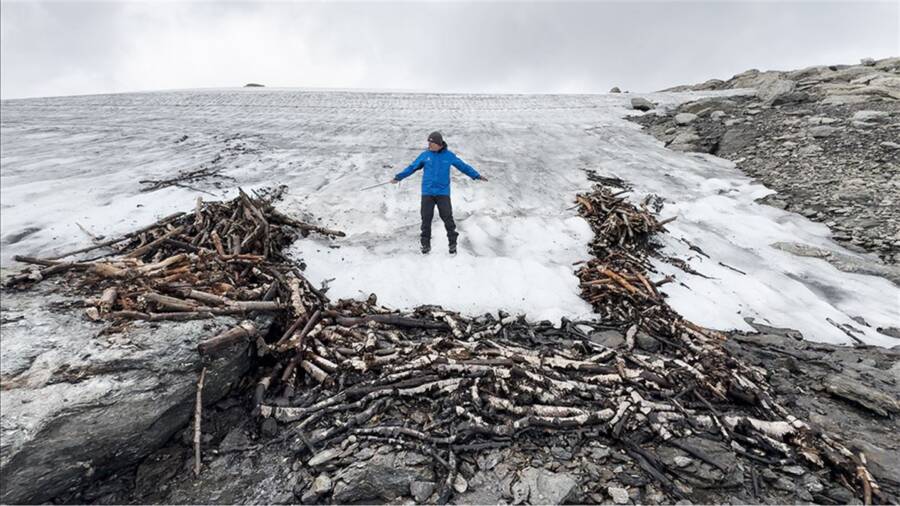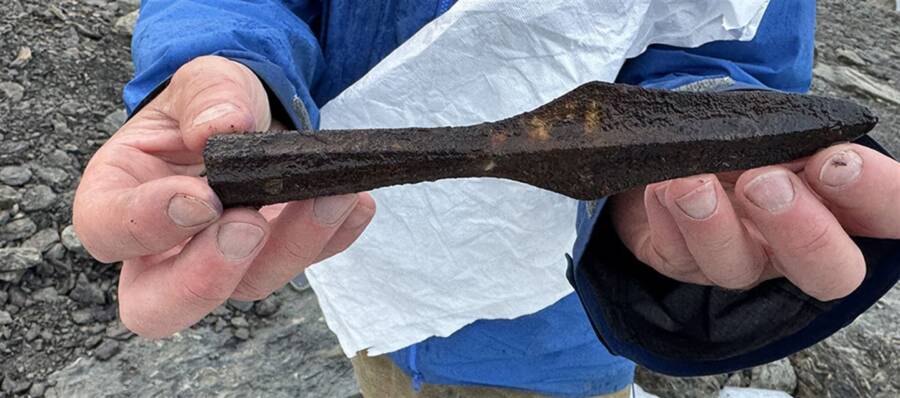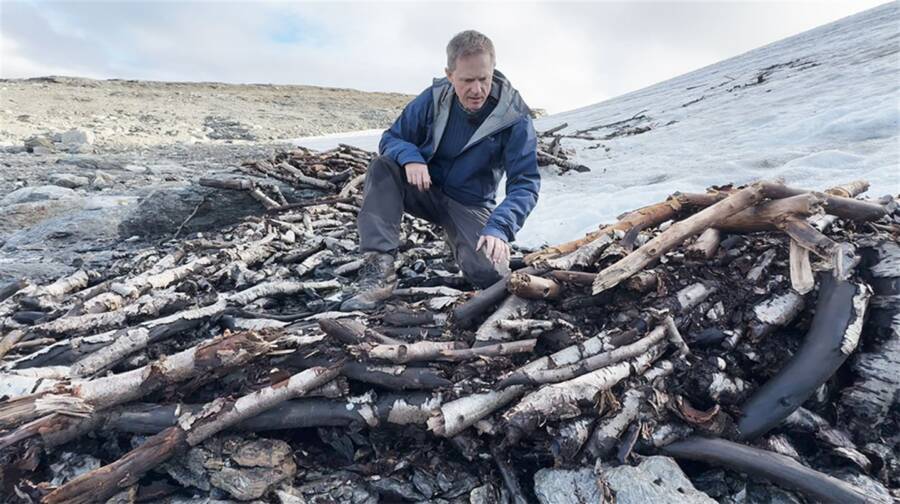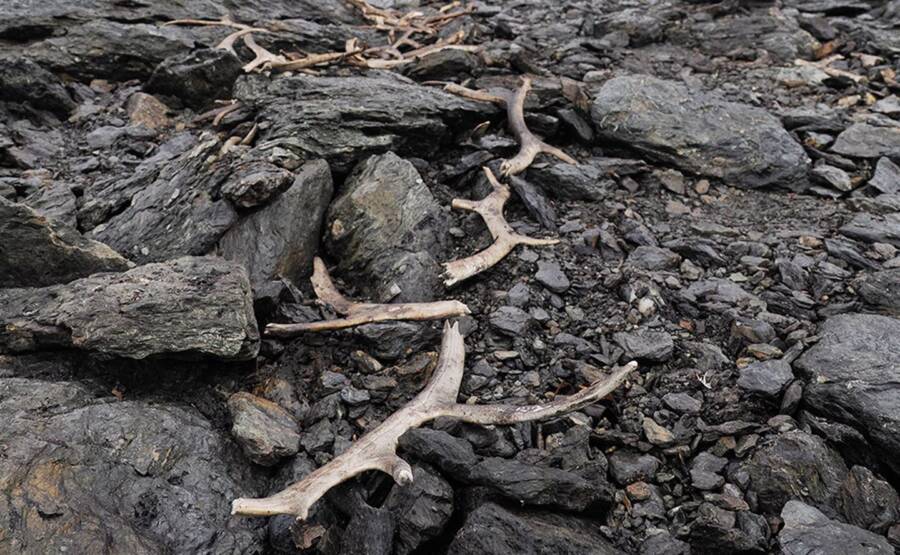While trekking through the Aurlandsfjellet mountains of western Norway, a hiker recently found an enormous reindeer trap that dates back 1,500 years.

Thomas Bruen Olsen/University Museum, UiBA hiker was the first one to spot the trap’s wooden logs sticking out of the snow.
A well-preserved 1,500-year-old reindeer trap has been discovered in the mountains of Vestland County, Norway.
Melting ice revealed the wooden trap, which had been preserved for centuries in the freezing conditions of the Aurlandsfjellet mountains. Alongside the carefully carved logs that made up the trap, archaeologists found numerous antlers, handcrafted wooden objects, and iron spearheads.
This is the first time that archaeologists have found such a trap in Norway.
“This is completely unique,” said archaeologist Leif Inge Åstveit. “It reminds us that the past is not gone. It is just lying there waiting, under the ice.”
The Discovery Of An Ancient Reindeer Hunting Trap In Western Norway

Thomas Bruen Olsen/University Museum, UiBSeveral iron spearheads were among the numerous artifacts found at the site.
The wooden trap was first discovered by a local hiker, according to the University Museum of Bergen. The man, who was familiar with the landscape and has an interest in archaeology, noticed wooden logs sticking out of the snow.
After archaeologists from the University Museum and Vestland County Council took over, they found numerous hewn wooden logs that made up a large reindeer trap. The most intact part of the structure were two wooden fences. The fences led the reindeer into a pen made out of large wooden logs, where they were then killed.
“We see that there has been mass capture. This was not random hunting. The animals were led into the pen, captured and killed systematically,” said Åstveit.
Amongst the wooden logs, archaeologists uncovered other items as well, including several sets of well-preserved reindeer antlers. They also found several other objects that would’ve been used for hunting, including iron spearheads, wooden spear shafts and arrow shafts, and parts of bows.
One particularly unique find was a pin made of antler. It’s possible that the pin was worn by a trapper and was lost during a battle or a hunt.
How Melting Ice Caused By Climate Change Is Illuminating Norway’s Distant Past

Thomas Bruen Olsen/University Museum, UiBArchaeologists from both the University Museum and Vestland County examined the site.
Even after 1,500 years, this hunting trap remains astonishingly intact thanks to the ice and snow that covered it for centuries. The trap was built sometime during the sixth century C.E., which marked the beginning of a particularly cold extended period in the region.
This led to the trap being covered in snow for much of the year. As temperatures dropped, and ice began to cover more and more of the area, it was likely no longer a functional trap and was abandoned. Now, the ice is melting, revealing this remarkable piece of history that had been sitting just underneath.
“This wouldn’t have happened without climate change. It’s both tragic and fascinating,” said Åstveit.
It’s not the first time that archaeologists have found artifacts beneath Norway’s ice. In August, archaeologists found more than 1,000 Viking artifacts, including sled fragments, arrows, and horseshoes, in an ice patch in the Jotunheim Mountains.

Leif Inge Åstveit/University Museum, UiBMany well-preserved reindeer antlers were also found at the site.
Elsewhere in the mountains of Norway in 2022, archaeologists found a Roman-style sandal under the ice that dates back 1,700 years. And in 2024, ancient reindeer hunting tools were found, also due to shrinking glaciers.
While countless other historical treasures have been found beneath Norway’s melting ice, the newly-uncovered hunting trap remains unique.
“We have never found anything like it,” Åstveit explained. “This opens up completely new interpretations of how such facilities actually functioned in practice. And it gives us a glimpse of what role reindeer hunting may have had in society in the Early Iron Age.”
After reading about the 1,500-year-old hunting trap, discover the story of the 1,200-year-old Viking sword found on a mountain in Norway. Then, learn about the thousands of artifacts that archaeologists uncovered at a 9,000-year-old settlement in Norway.





